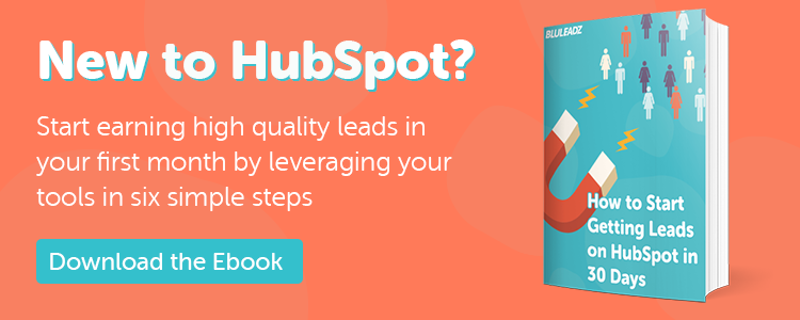Do you find yourself looking at your HubSpot workflows and thinking, “Why did I create this?”
Or have you searched for something and found that there are workflows that are similar, leading to double enrollment for contacts? Or, the worst case, workflows that contradict themselves and therefore aren’t being useful at all?
When there are multiple users in a HubSpot portal setting up workflows, it is bound to get messy and confusing.
Therefore, it is important to perform regular audits to make sure your workflows are performing and to clean up and optimize the ones that are.
Here are a few tips for auditing and cleaning up your HubSpot workflows:
Tip #1: Perform Audits Regularly
When you create a workflow, you shouldn't just “set it and forget it.” Just like a website, landing page, email, or other piece of content, you should regularly check in on your workflows to see how they are performing.
Looking at your workflows on a quarterly basis is a good start to make sure that things don’t get cluttered and confusing. If too much time passes before you look at your workflows as a whole, then it will only be that much more of a daunting task.
Tip #2: Export Your Current Workflows Into a Spreadsheet
When you do perform a workflow audit, you can export all your workflows from HubSpot into an Excel or Google spreadsheet to help keep track of which ones you have reviewed.
Once you’ve exported your workflows into a spreadsheet, we recommend adding in a few columns to help with the cleanup. Start with the “Cleanup Notes” and “Recommendation” columns.
In the “Cleanup Notes” column, you can add in notes, thoughts, and other input about the workflow. Are the enrollment and un-enrollment criteria still relevant? Is the content using old emails? Is the workflow meeting the overall goal? These are the types of things that you should be including in an added notes column.
Your “Recommendation” column should be what your next steps are for the workflow. Is it good as is? Does it need to be turned off/deleted? Or, should you just have modifications made and update the content?
If you have multiple pages of workflows to go through, you might want to add a third tab that says “Status” after the “Recommendation” column. That way you can mark if the recommendation is in progress, complete, etc. And, if you’re anything like me, you’ll color code these to make it easy to follow.
Tip #3: Archive/Delete Unnecessary Workflows
Just like you shouldn’t create a workflow and then forget it, you should also avoid turning off a workflow and forgetting it.
Has the workflow been turned off more than six months to a year ago? If yes, are you going to ever turn it back on? If not, then why are you letting it clutter up your workflows and making it harder to find our good active workflows among a sea of ones that are turned off?
Every so often, skim over your workflows and find the ones collecting dust in your system. Then, archive them so you can easily locate the workflows that are active.
Tip #4: Make Your Labels Specific
Do you have a very generic workflow labeled something like “Lead Nurturing Email Campaign” and have to wonder what is in it? You should be able to have some kind of idea of what the workflow entails just by the title.
For example, you can include specific campaign names, descriptions, and even dates in your workflows so it is easier to search among workflows and identify their contents or purpose. When you perform a workflow update, you can update the dates in the title to make it easy to know when changes were made.
So, instead of “Lead Nurturing Email Campaign,” a good title would be something like “Lead Nurturing: Marketing Strategy Guide Downloads (Updated Feb. 2019).” That way, you know what kind of workflow it is (lead nurturing), who it is for (those who downloaded the Marketing Strategy Guide) and when it was updated (Feb. 2019).
Don’t Let Your Workflows Get Out of Hand
Long story short, the more you update, organize, label, and optimize your workflows, the easier it is to audit them and the better they will work for you.
Workflows are great for internal processes, sales processes, marketing lead nurturing campaigns, and so much more, and therefore they should be your friend!


Jenna Tinney
As an Inbound Marketing Consultant at Bluleadz, it is my passion to work directly with clients in order to help maximize their inbound marketing strategies. In my spare time, I enjoy being outside on the water either paddleboarding, fishing, boating, scuba diving or just relaxing in the sun.